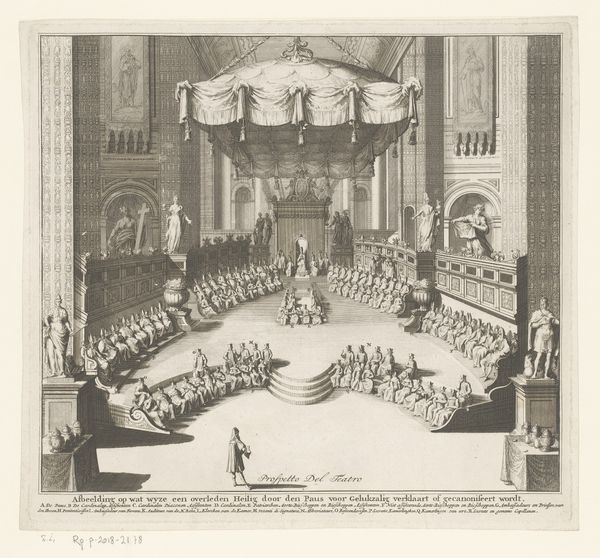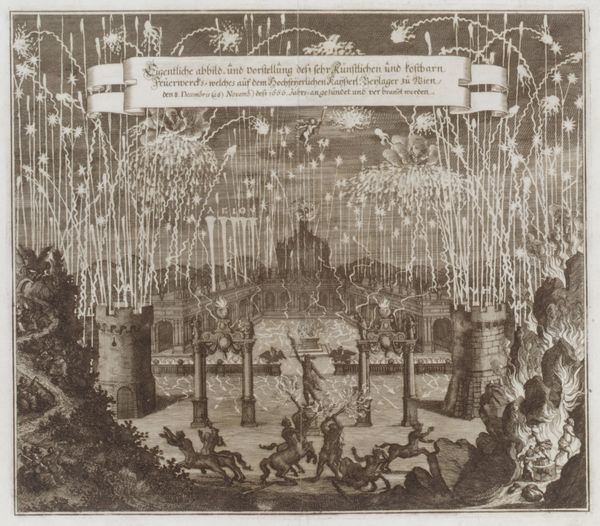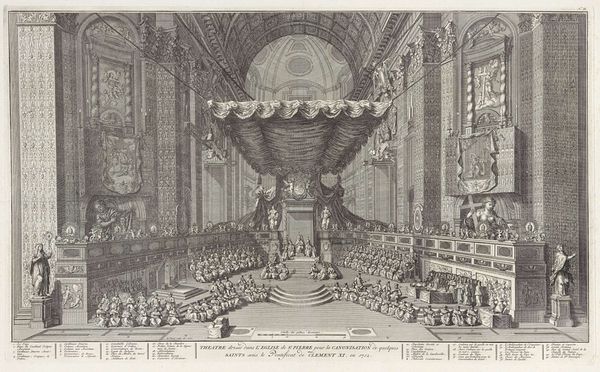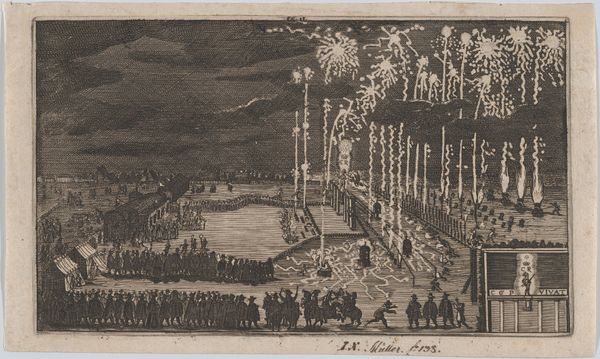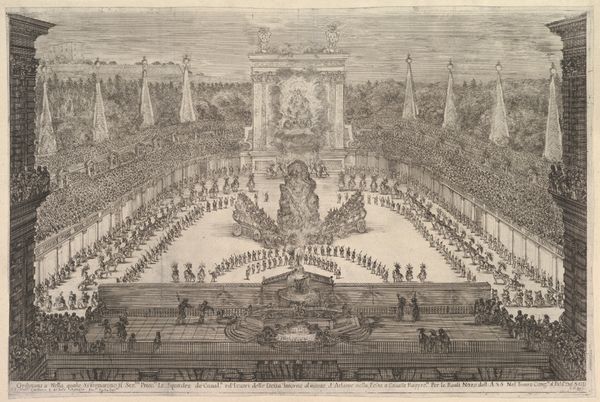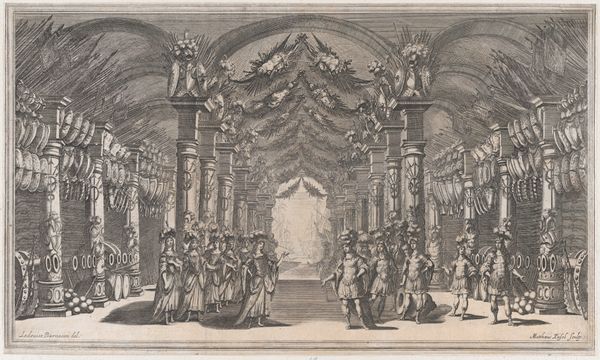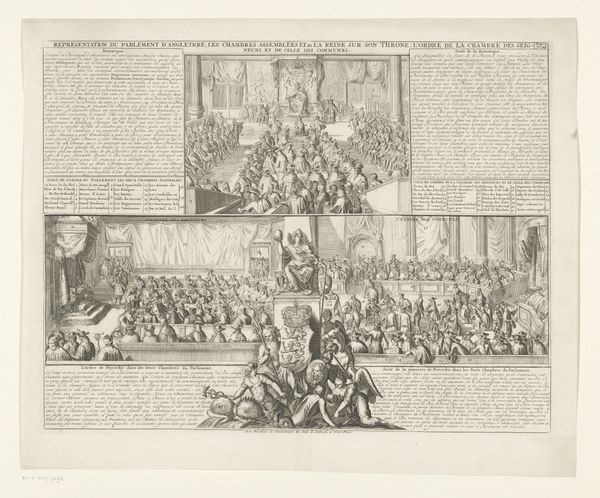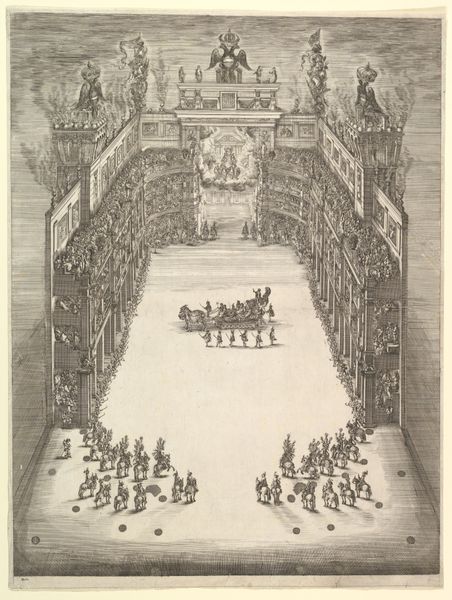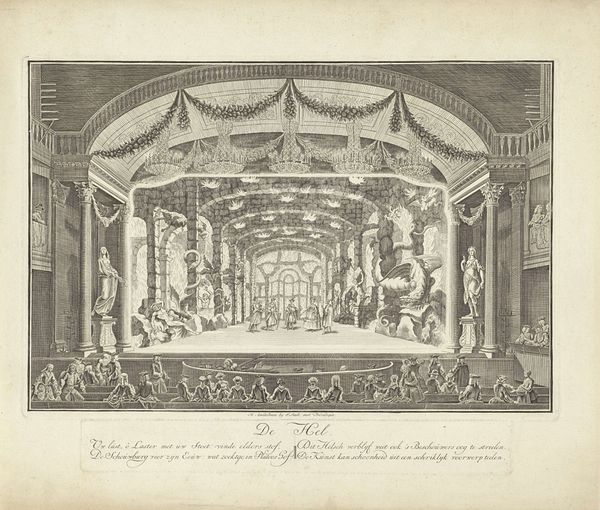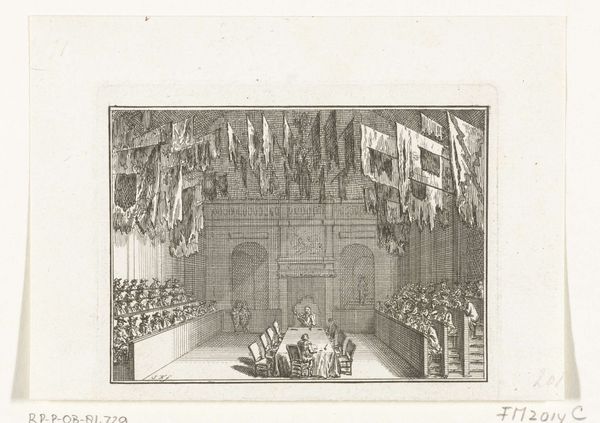
print, engraving
#
baroque
# print
#
old engraving style
#
landscape
#
cityscape
#
history-painting
#
engraving
Dimensions: height 147 mm, width 180 mm
Copyright: Rijks Museum: Open Domain
Curator: This engraving, "Vuurwerk bij de intocht van koning Willem III te Den Haag, 1691," immortalizes a festive moment with fireworks welcoming King William. The medium is print on paper and the artist remains anonymous. I’m immediately struck by the rigid formality, even in the depiction of what should be exuberant celebration. What are your first impressions? Editor: I agree; I see the precise lines and ordered composition, yet I sense almost an unsettling mood, particularly in the way the light from the fireworks illuminates the somewhat densely packed crowd. Can you help me understand more about how to read this piece through its form? Curator: Certainly. Let's begin with the composition. Notice how the anonymous artist arranges the architectural elements—the building on the right and the allée of trees on the left. They create a strong sense of perspective leading toward the center. The fireworks act as the apex of this visual pyramid, drawing the eye upwards and inwards. Do you observe any visual relationships between the figures, fireworks, and architecture? Editor: Yes, I see the way the lines of the fireworks seem to echo the lines of the buildings and trees, almost binding them together. And the repetition in the depiction of the crowds feels really intentional, adding to that unsettling sense of order. What does that achieve formally? Curator: Precisely. That intentional repetition, that visual echo, strengthens the formal unity of the print. The artist masterfully uses line to delineate form and create tonal contrast, despite the print being largely monochrome. Light and shadow play an important role; the brilliance of the fireworks sharply contrasts with the deep shadows of the surrounding buildings and crowd. How does that play on Baroque ideals? Editor: So, even a depiction of joyous fireworks displays an intriguing sense of order, perhaps as a representation of royal control? And analyzing the composition of architectural elements, and considering visual echoes as repetitions help understand form...fascinating! Curator: Precisely. Form truly dictates content. It is an interesting testament to a period.
Comments
No comments
Be the first to comment and join the conversation on the ultimate creative platform.
